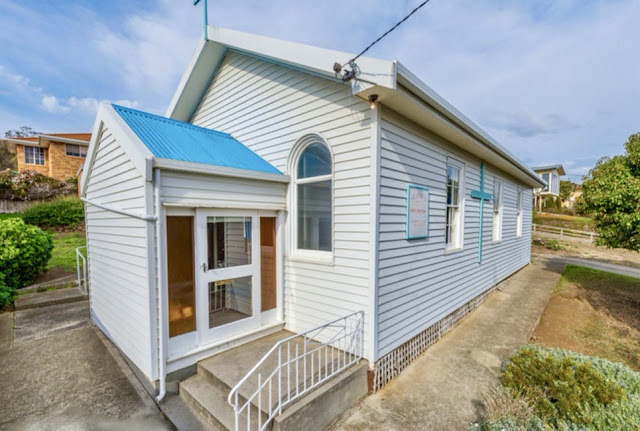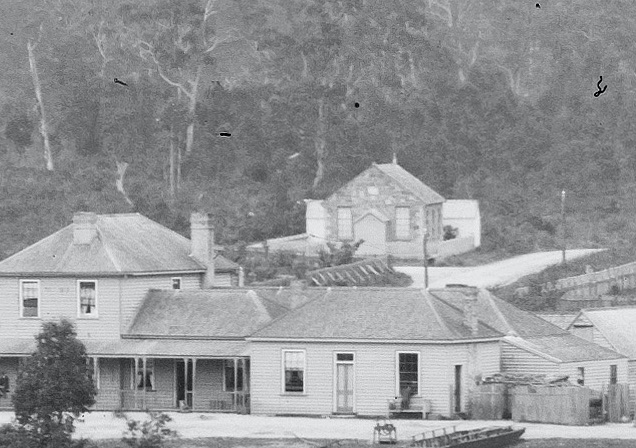No. 735 - Wivenhoe - Salvation Army Hall

Wivenhoe is a suburb of Burnie situated on the east bank of the Emu River. It has developed into an industrialised area which is located about 3 kilometres south-east of the city centre. It is named after the town (and parish) of Wivenhoe in Essex County, by Captain Henry Butler Stoney in the 1850's. The Salvation Army was formed at Burnie in the 1890’s and further ‘outposts’ were established in neighbouring Wivenhoe in the 1940s and at Montello, Upper Burnie, in the 1950s. There are few available records about the Wivenhoe Salvation Army Hall and I have found only a single photography of the building which can be seen in a general view of the suburb. The first public service at the hall was held on Sunday 17 December 1944. This was reported in the Burnie Advocate: “The first public service held in the new Salvation Army Hall at Wivenhoe was conducted last evening by Major R. Sutton. There was a large gathering. The hall, situated in Smith street, was erected on a block of land don...









